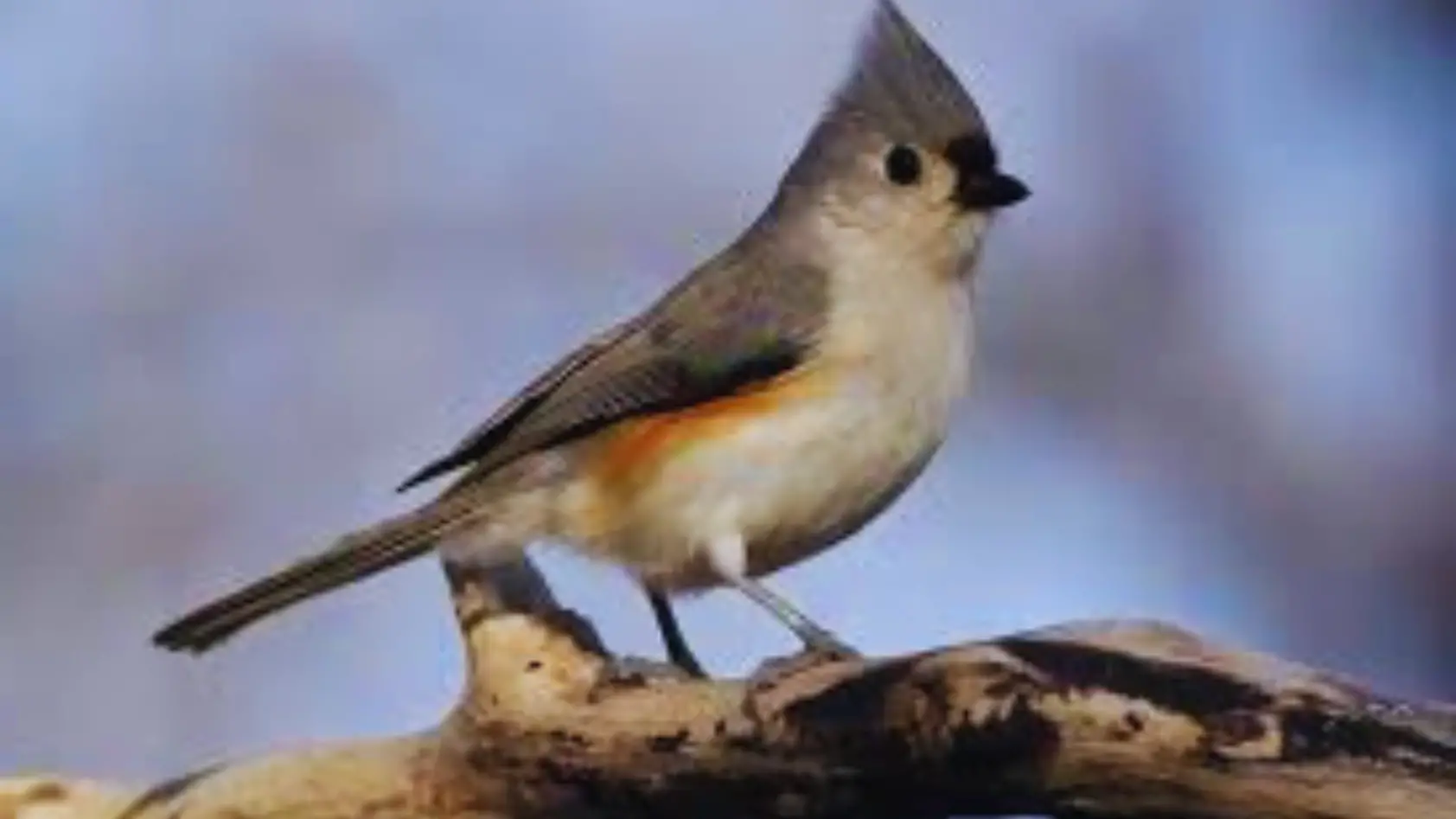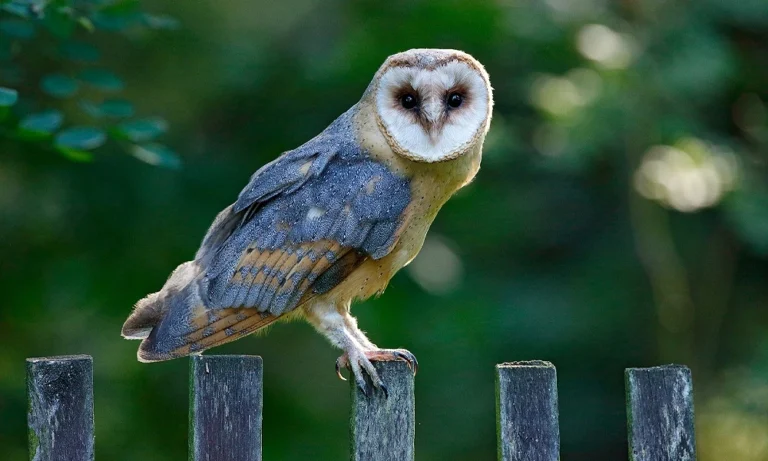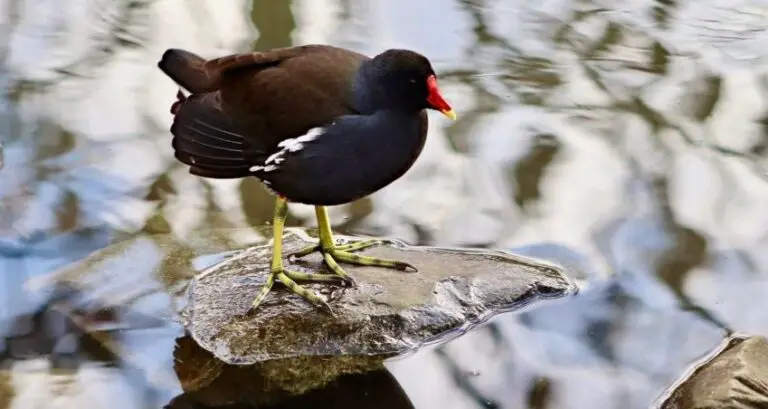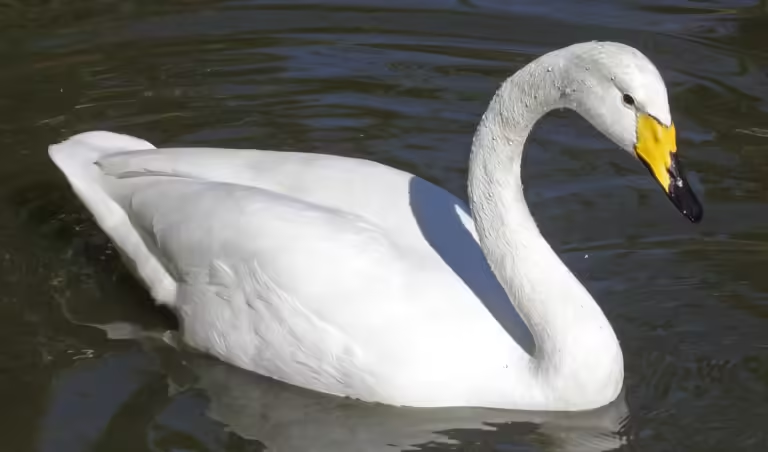The Tufted Titmouse is a small songbird with a gray body, black head, and white belly. This bird is found in woodlands across North America and is known for its loud, clear call. Tufted Titmouse Calls are loud.
These tiny birds have a secret language that is just waiting to be decoded.
You might be surprised to learn that Tufted Titmice are not just adorable little creatures; they are also incredibly talented musicians. Their calls are not just random sounds, but have specific meanings and purposes.
By understanding their vocalizations, we can gain insight into their behavior, communication, and even their emotions.
So, get ready to embark on a journey of discovery as we explore the various types of calls produced by Tufted Titmice and decipher their hidden messages.
With the help of advanced recording and analysis techniques, we will uncover the secrets of these tiny birds and gain a deeper appreciation for their musical talents.
Key Takeaways
- Tufted Titmice have a secret language of calls with specific meanings and purposes.
- Understanding their vocalizations provides insight into their behavior, communication, and emotions.
- Tufted Titmice are talented musicians, not just adorable creatures.
- Their vocalizations serve purposes such as communication within the flock, attracting mates, defending territory, and warning of threats.
Introduction to Tufted Titmice
Get ready to learn all about the adorable tufted titmouse and its fascinating world!
These tiny birds, with their distinctive tufted crest and black markings, are a common sight in North America. They are known for their friendly and sociable nature, often seen in small flocks hopping from branch to branch in search of food.
Tufted titmice are cavity nesters, meaning they build their nests in tree holes or use abandoned woodpecker nests. They are also known for their unique vocalizations, which consist of a variety of whistles, chirps, and trills.
These calls serve different purposes, from communication within the flock to establishing territory and attracting mates. By understanding the meanings behind their calls, researchers can gain insights into their behavior and social dynamics.
So, if you’re curious about these fascinating little birds and want to learn more about their world, read on to discover the secrets of the tufted titmouse call!
Anatomy and Characteristics of Tufted Titmice
Tufted titmice possess fascinating anatomical features and characteristics. These small birds measure around 6 inches in length and weigh about 0.6 ounces. One of their most recognizable features is their tufted crest, which can be raised or lowered depending on their mood or level of excitement. They have a gray upper body, white underparts, and a black forehead patch. Their wings and tail are a bluish-gray color, adding to their overall charm.
Tufted titmice have a strong beak that is perfect for cracking open seeds and nuts. Their diet primarily consists of insects, seeds, berries, and small fruits. They are agile climbers and can often be seen hopping along tree trunks in search of food. Another interesting characteristic is their ability to store food for later use. They will often stash seeds or insects in crevices or bark, creating a hidden food supply that they can access during harsh weather or when food is scarce.
When it comes to vocalizations, tufted titmice are quite talented. They have a variety of calls, including a clear, whistled ‘peter-peter-peter’ and a series of high-pitched ‘see-see-see’ notes. These calls are used for communication and to establish territory. Tufted titmice are also known to mimic the calls of other bird species, adding to their repertoire of sounds.
In conclusion, tufted titmice are fascinating birds with unique anatomical features and characteristics. From their tufted crest to their strong beak and versatile vocalizations, these small birds are truly a delight to observe in nature.
Overview of Vocalizations in Birds
Explore the captivating world of bird vocalizations as you dive into the intricate melodies and rhythmic symphonies that these feathered creatures create. Birds are known for their diverse and complex vocalizations, which serve a variety of purposes. From attracting mates to defending territories, vocalizations play a crucial role in the lives of birds.
Birds produce vocalizations using a specialized vocal organ called the syrinx. This unique adaptation allows them to create a wide range of sounds, from melodious songs to sharp calls. Each species has its own unique vocal repertoire, with distinct patterns and rhythms.
When it comes to tufted titmice, their vocalizations are a combination of whistles, chirps, and trills. These tiny birds have a wide repertoire of calls, each serving a different purpose. They use a series of high-pitched whistles to communicate with each other, creating a melodious and rhythmic symphony in their surroundings.
One of the most distinctive calls of tufted titmice is their ‘peter-peter-peter’ song, which is used for territorial defense. This call is loud and clear, serving as a warning to other birds to stay away from their claimed territory.
As you explore the enchanting world of bird vocalizations, you will be amazed by the complexity and beauty of the sounds they create. The tufted titmouse is just one example of the incredible vocal abilities these feathered creatures possess. So next time you hear a bird singing, take a moment to appreciate the intricate melodies and rhythmic symphonies that fill the air around you.
Types of Calls Produced by Tufted Titmice
Step into the enchanting world of tufted titmice and listen to the mesmerizing symphony they create with their diverse vocalizations. These tiny birds have a wide range of calls that they use for various purposes.
One of the most common calls is the ‘peter-peter-peter’ song, which is used to establish territory and attract mates. It is a clear and melodious whistle that is often repeated several times.
Another call is the ‘chick-a-dee-dee-dee’ call, which is used to communicate with other members of their flock. This call is made up of different notes and can vary in rhythm and pitch.
The tufted titmice also produce a variety of other calls, including alarm calls, begging calls, and contact calls. Each call has its own distinct sound and is used in different social contexts.
These vocalizations not only help tufted titmice communicate with each other but also serve as a way to defend their territory and warn of potential threats. So next time you hear the chirping of a tufted titmouse, take a moment to appreciate the complexity and beauty of their vocal repertoire.
Decoding the Meaning Behind Tufted Titmouse Calls
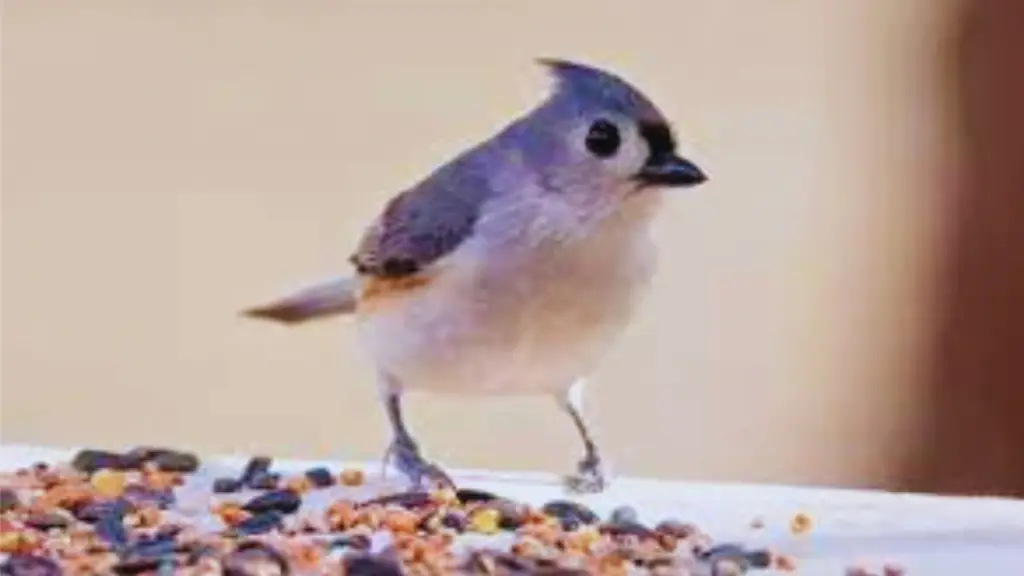
When it comes to tufted titmouse calls, there is much more than meets the ear. These tiny birds utilize a variety of calls to communicate and engage in social interactions with other titmice.
They also use their calls to defend their territory, attract mates during courtship, and warn each other about potential predators.
So, next time you hear a tufted titmouse call, pay attention to the meaning behind it and the fascinating behaviors it represents.
Communication and Social Interactions
Communication and social interactions among tufted titmice are fascinating to observe. These tiny birds use a variety of whistles and chirps to interact with one another. Their vocalizations serve multiple purposes, including establishing territories, attracting mates, and coordinating group activities.
For example, the tufted titmouse’s signature ‘peter-peter-peter’ call is often used to assert dominance and defend their territory against intruders. They also engage in reciprocal calling, where one bird will emit a specific call and another will respond with a different call, creating a back-and-forth conversation. These social interactions help maintain group cohesion and strengthen social bonds within the tufted titmouse community.
Additionally, vocalizations are used during courtship, with males singing complex songs to attract females. Overall, the communication and social interactions of tufted titmice are essential for their survival and play a significant role in their everyday lives.
Territory Defense
Guarding your territory is a fierce and vigilant task, as you actively defend your space against intruders and assert your dominance with powerful calls. The tufted titmouse is no exception, as it uses its distinct vocalizations to communicate and defend its territory.
Here are three ways in which these tiny birds defend their turf:
- Whistle away: When an intruder enters your territory, you respond with a series of high-pitched whistles. These whistles serve as a warning signal, alerting the trespasser that they are encroaching on your space.
- Chirping showdown: If the warning whistles are ignored, you escalate the situation by engaging in a chirping showdown. Your rapid series of chirps not only convey your determination but also intimidate the intruder and establish your dominance.
- Group effort: In some cases, you team up with your fellow titmice to defend your territory. By joining forces and unleashing a chorus of calls, you create a united front that is even more intimidating to potential intruders.
By employing these strategies, tufted titmice successfully defend their territories and ensure their survival in the avian world.
Mating and Courtship
Immerse yourself in the enchanting world of courtship as vibrant displays of feathers and melodious songs fill the air, capturing the attention of potential mates. Male tufted titmice put on a spectacular show to attract females, showcasing their strength, agility, and vocal talents. As they hop from branch to branch, their soft, whistled notes echo through the forest. The courtship ritual begins with the male presenting the female with a carefully chosen gift, such as a piece of fruit or an insect. If she accepts, they engage in a synchronized dance, twirling and fluttering their wings in perfect harmony. This intricate courtship behavior is a testament to the tufted titmouse’s commitment to finding a suitable mate.
| Behavior | Description |
|---|---|
| Wing Fluttering | The male and female perform synchronized fluttering of their wings. |
| Gift Presentation | The male offers the female a gift, such as a piece of fruit or an insect. |
| Whistled Notes | The male sings soft, melodious whistles to serenade the female. |
Warning and Predation
Step into the world of warning and predation, where danger lurks in the shadows, ready to pounce on unsuspecting prey like a stealthy predator stalking its next meal.
The tufted titmouse, with its distinctive call, plays a crucial role in alerting other birds of potential danger. When a predator is near, these tiny birds emit a series of high-pitched whistles and chirps that serve as a warning signal to their fellow feathered friends.
Their calls not only inform others about the presence of danger but also help coordinate a collective response. By communicating through their unique vocalizations, tufted titmice are able to increase their chances of survival and avoid falling prey to predators.
So next time you hear the shrill call of a tufted titmouse, remember that it’s not just a beautiful melody, but a vital warning signal in the world of nature.
Variations in Calls Among Tufted Titmice Populations
Did you know that tufted titmice populations have variations in their calls? These tiny birds may all look similar, but their vocalizations can differ depending on where they live. Here are three interesting variations in calls among tufted titmice populations:
- Pitch: The pitch of tufted titmouse calls can vary between populations. Some populations have higher-pitched calls, while others have lower-pitched calls. This difference in pitch may be influenced by factors such as habitat type and acoustic environment.
- Rhythm: The rhythm of tufted titmouse calls can also vary among populations. Some populations may have faster, more rapid calls, while others may have slower, more deliberate calls. This variation in rhythm may be related to factors such as social structure and communication needs.
- Repertoire: The repertoire of vocalizations produced by tufted titmice can vary between populations. Some populations may have a wider range of calls, including different whistles and chirps, while others may have a more limited repertoire. This variation in repertoire may be influenced by genetic factors and cultural transmission.
These variations in calls among tufted titmice populations highlight the complexity and adaptability of these birds’ communication systems. By studying these variations, researchers can gain valuable insights into the behavior and ecology of tufted titmice across different habitats.
Tips for Identifying Tufted Titmouse Calls
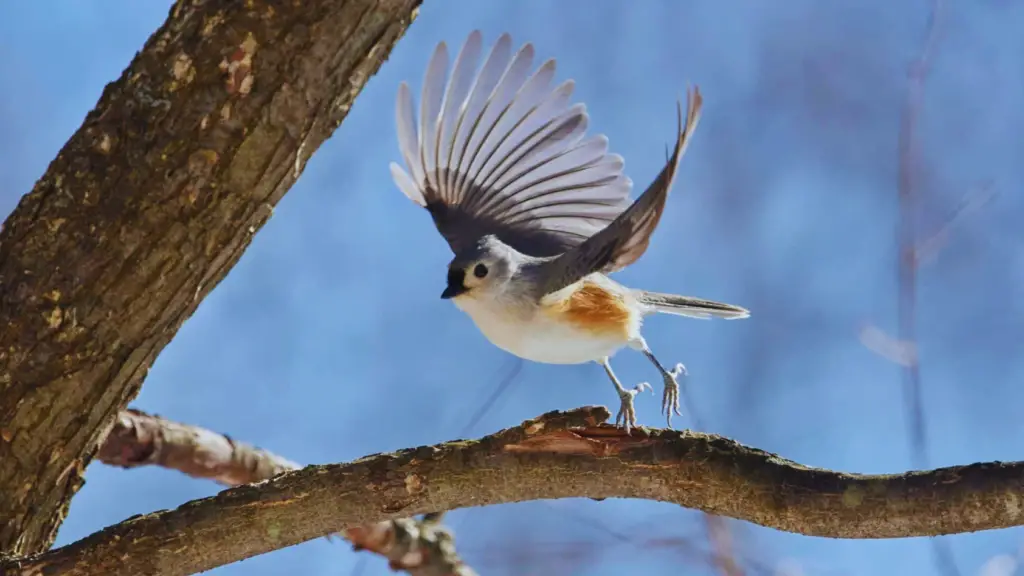
Listen closely to the melodic songs of the tufted titmouse, and you’ll be transported to a forest filled with the enchanting trills and warbles of these charismatic creatures. But how can you differentiate between their various calls? Here are some tips to help you identify tufted titmouse calls.
Firstly, pay attention to the pitch and rhythm of the call. The tufted titmouse has a wide range of vocalizations, including whistles, trills, and chirps. Each call has its own unique pattern and tone. For example, their typical ‘peter-peter-peter’ call is a long, high-pitched whistle with a consistent rhythm.
Secondly, listen for any variations in their calls. Tufted titmice from different regions may have slightly different dialects, just like humans. By familiarizing yourself with the calls of tufted titmice in your area, you can become more adept at recognizing them.
Additionally, observe the context in which the calls are made. Tufted titmice often use specific calls to communicate with each other, whether it’s to warn of predators or to establish territory. Understanding the context can provide valuable clues to help you identify their calls.
In conclusion, by paying attention to the pitch, rhythm, variations, and context of tufted titmouse calls, you can become a skilled observer and appreciate the intricate vocal repertoire of these tiny birds. So next time you’re in the woods, take a moment to listen closely to the enchanting melodies of the tufted titmouse and let their songs transport you to a world of natural beauty.
Recording and Analyzing Tufted Titmouse Calls
When you engage in the process of capturing and studying the melodic vocalizations of the captivating tufted titmouse, you’ll discover a world of intricate patterns and fascinating communication methods.
Recording and analyzing tufted titmouse calls is an essential part of understanding their behavior and communication. To begin, you’ll need a good quality audio recorder to capture the calls in their natural environment. Find a suitable location where tufted titmice are known to frequent, such as wooded areas with plenty of trees and shrubs. Position the recorder at a distance that allows for clear and undistorted recordings.
Once you have recorded the calls, it’s time to analyze them. Start by transferring the audio files to your computer and use specialized software for sound analysis. Spectrogram software can help you visualize the calls and identify their different components, such as frequency, duration, and amplitude. Look for recurring patterns and note any variations in the calls.
Listen carefully to the different elements of the calls, such as whistles, chirps, and trills. Pay attention to the timing and sequence of these elements, as they can convey different messages.
By recording and analyzing tufted titmouse calls, you can gain valuable insights into their social structure, territorial behavior, and even their emotional state. It’s a fascinating process that allows you to decode the whistles and chirps of these tiny birds and unravel the mysteries of their intricate communication system.
So grab your recorder, head into the woods, and immerse yourself in the captivating world of tufted titmouse calls.
Conservation and Protection of Tufted Titmice
Now that you’ve learned about recording and analyzing Tufted Titmouse calls, let’s shift our focus to the crucial aspect of conservation and protection of these adorable little birds.
Conservation efforts play a vital role in ensuring the survival of Tufted Titmice populations. By taking actions to safeguard their habitats, we can create a safe and suitable environment for them to thrive. Here are some key aspects of conservation and protection:
- Preserving natural habitats: Protecting the forests and woodlands where Tufted Titmice make their homes is crucial. This involves limiting deforestation and ensuring the sustainability of these ecosystems.
- Providing nesting sites: Installing birdhouses or nest boxes can provide additional nesting opportunities for the birds, especially in areas where natural cavities are scarce.
- Controlling predators: Managing populations of predators, such as raccoons and snakes, can help reduce predation on Tufted Titmice and increase their chances of survival.
- Promoting biodiversity: Encouraging the growth of native plants and trees can attract a variety of insects and other invertebrates, which serve as a vital food source for Tufted Titmice.
- Educating the public: Raising awareness about the importance of conserving Tufted Titmice and their habitats can inspire individuals to take action and contribute to their protection.
By implementing these conservation strategies, we can ensure a bright future for the charming Tufted Titmice, allowing them to enchant us with their delightful calls for generations to come.
Fun Facts About Tufted Titmice
Did you know that Tufted Titmice are highly sociable creatures and often join mixed-species foraging flocks? These small birds are known for their curious and playful nature, making them a delight to observe.
One interesting fact about Tufted Titmice is their ability to store food for later. They have been observed caching food items such as seeds and insects in tree crevices or even in the ground. This behavior helps them survive during harsh winter months when food sources may be scarce.
Another fun fact about these birds is their unique vocalizations. They are known for their wide range of whistles, songs, and calls, which they use to communicate with each other. From their distinct ‘peter-peter-peter’ call to their melodic songs, Tufted Titmice have a repertoire of sounds that can be fascinating to listen to.
In addition, Tufted Titmice are known for their intelligence. They have been observed using tools, such as twigs, to extract food from crevices. They are also quick learners and can adapt to different feeding strategies depending on the situation.
Overall, Tufted Titmice are fascinating creatures with their sociable nature, unique vocalizations, and intelligent behavior. So, next time you spot one of these tiny birds in your backyard, take a moment to appreciate the wonders of nature they bring.
Conclusion: Appreciating the Musical Talents of Tufted Titmice

Appreciating the musical talents of these sociable creatures is like listening to a symphony of nature’s harmonious melodies. The tufted titmice, with their whistles and chirps, bring joy and beauty to any outdoor setting. These tiny birds have an impressive vocal range and are known for their diverse repertoire of calls.
One of the most common calls of the tufted titmouse is a two-note whistle, often described as ‘peter-peter.’ This call is used to establish territory and communicate with other members of their flock. It is a distinct sound that can easily be recognized in the woods or even in your own backyard.
Another interesting call of the tufted titmouse is a series of high-pitched notes, often referred to as a ‘chick-a-dee-dee-dee’ call. This call is used as an alarm signal to warn other birds of potential danger. It is a rapid and repetitive call that can be heard when there is a predator nearby.
In conclusion, the tufted titmice have a remarkable talent for creating beautiful melodies with their calls. Their whistles and chirps add a touch of magic to the natural world. So, next time you find yourself outside, take a moment to appreciate the musical talents of these tiny birds. Listen carefully, and you might just find yourself lost in the enchanting symphony they create.
FAQs About Tufted Titmouse Call
How can I attract tufted titmice to my backyard?
To attract tufted titmice to your backyard, provide them with a variety of food sources such as seeds, nuts, and suet. Also, create a welcoming environment by planting native trees and shrubs for them to nest in.
Do tufted titmice migrate during the winter?
Yes, tufted titmice do migrate during the winter. They travel to warmer regions to find food and shelter. Providing bird feeders and nesting boxes in your backyard can attract them during their migration.
Can tufted titmice mimic other bird species?
Yes, tufted titmice can mimic other bird species. They have a diverse repertoire of calls and can imitate the songs and calls of various birds, often using their mimicry skills to defend their territory or attract mates.
How long do tufted titmice live on average?
You’ll be amazed at how long tufted titmice live! These tiny birds have an average lifespan of over 13 years, defying expectations with their remarkable longevity.
Are tufted titmice affected by habitat loss and deforestation?
Yes, tufted titmice are affected by habitat loss and deforestation. They rely on mature forests for nesting and foraging, so when their habitat is destroyed, their populations can decline.
Conclusion
So there you have it, folks! You’ve just witnessed the incredible musical talents of the tufted titmouse. These tiny birds may be small in size, but boy, can they make some noise!
From their whistles to their chirps, they’ve got a repertoire that would make any opera singer jealous.
So next time you hear these feathered maestros in action, take a moment to appreciate the sheer brilliance of their vocal performances. Trust me, it’s a show you won’t want to miss!

